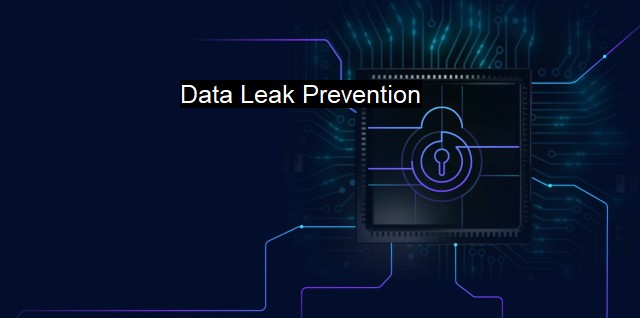What is Data Leak Prevention?
Securing Sensitive Data with Data Leak Prevention Technology: A Comprehensive Approach to Cybersecurity and Antivirus Protection
Data Leak Prevention (DLP) is a set of strategies and tools that ensure end users do not send critical or sensitive data outside their corporate network. It is a strategic solution used by organizations throughout the world to protect valuable and private data from being stolen or accidentally disclosed. This can range from financial information, personal identifiable information, intellectual property to even proprietary business plans. the concept revolves around identifying and protecting sensitive data to prevent unauthorized exposure.In the context of cyber security, DLP approaches act like a shield, safeguarding a corporate network's valuable data while it' s in storage, in use, and in transit over the network. Each of these stages is vulnerable and prone to cyber threats, hence making DLP an instrumental security strategy. It involves classifying data sensitivity levels and defining policies on who can access what data, and how it can be used and distributed to achieve a holistic coverage.
There are different tools and solutions that exist to support a DLP strategy. Such tools monitor and control endpoint activities, filter data streams on corporate networks and protect data in motion and at rest. For instance, when sensitive data like credit card information is discovered suspended in the system or sent outside the network without encryption, DLP tools will alert the administrators, allowing them to intervene and protect this type of data.
In tandem with antivirus software, DLP significantly strengthens the cybersecurity framework of an organization. Antivirus software essentially protects a computer or a network from malicious software or viruses, while DLP takes a step ahead and works on protecting valuable data from unauthorized and suspicious outflow, anticipating potentially weak points in the network that might lead to data breaches.
It's vital to note that DLP is not exclusively concerned with external threats such as hacking or malware attacks orchestrated by malicious actors. Sometimes, internal breaches by the organization's users can occur, whether malicious or accidental. Perhaps an employee unwittingly sends client details to an unverified email address, or store confidential company data on a personal device, potentially putting the organization at risk, hence the necessity for clearly defined and stringent DLP policies.
One of the most significant benefits of a DLP solution is its ability to help with compliance. Many regulations mandate data protection rules, such as the General Data Protection Regulation (GDPR) in the European Union, or the Health Insurance Portability and Accountability Act (HIPAA) in the United States. Both these regulations describe significant penalties for data breaches. By utilizing a DLP approach, organizations can demonstrate that they have taken the necessary measures to protect sensitive data, hence avoiding penalties and demonstrating responsibility to stakeholders.
A potential hindrance in DLP implementation can be seen in organizations that have substantial amounts of data stored on cloud servers. DLP solutions have adapted to best practices for securing data, even within these complex architectures.
DLP is essential for cybersecurity operations in any organization. It serves as a formidable guard, protecting precious data assets, thereby augmenting an organization’s cyber preparedness. By coupling DLP strategies with antivirus software and ongoing employee education, potential data leaks can be foreseen and prevented, thereby steering clear of both legal and financial repercussions. practicing stringent cybersecurity measures infused with sturdy data leak prevention strategies guarantees the preservation of trust and consumer confidence, crucial to the organizational brand and success.

Data Leak Prevention FAQs
What is data leak prevention?
Data leak prevention, also known as DLP, is a security strategy that helps organizations to prevent the unauthorized disclosure or transfer of sensitive data. It involves identifying and classifying sensitive data, creating policies and rules to control its use, and deploying technology solutions to monitor and prevent data leaks.Why is data leak prevention important in cybersecurity?
Data leak prevention is important because it allows organizations to protect their sensitive data from cyber threats such as hacking, phishing, malware, and insider threats. By implementing DLP, organizations can reduce the risk of data loss, comply with regulations such as GDPR and HIPAA, and maintain the trust of their customers and partners.What are some common data leak prevention solutions?
Common data leak prevention solutions include endpoint security software, network security appliances, data loss prevention software, intrusion prevention systems, and encryption tools. These solutions help to detect and prevent data leaks by monitoring and controlling the flow of data across the network, endpoints, and cloud environments.How can I implement data leak prevention in my organization?
To implement data leak prevention in your organization, you should start by identifying and classifying your sensitive data, defining policies and rules to control its use, and selecting the appropriate technology solutions to enforce those policies. You should also train your employees on cybersecurity best practices and raise their awareness of the risks of data leaks. Finally, you should regularly monitor and evaluate your DLP program to ensure that it is effective and up to date.| | A | | | B | | | C | | | D | | | E | | | F | | | G | | | H | | | I | | | J | | | K | | | L | | | M | |
| | N | | | O | | | P | | | Q | | | R | | | S | | | T | | | U | | | V | | | W | | | X | | | Y | | | Z | |
| | 1 | | | 2 | | | 3 | | | 4 | | | 7 | | | 8 | | |||||||